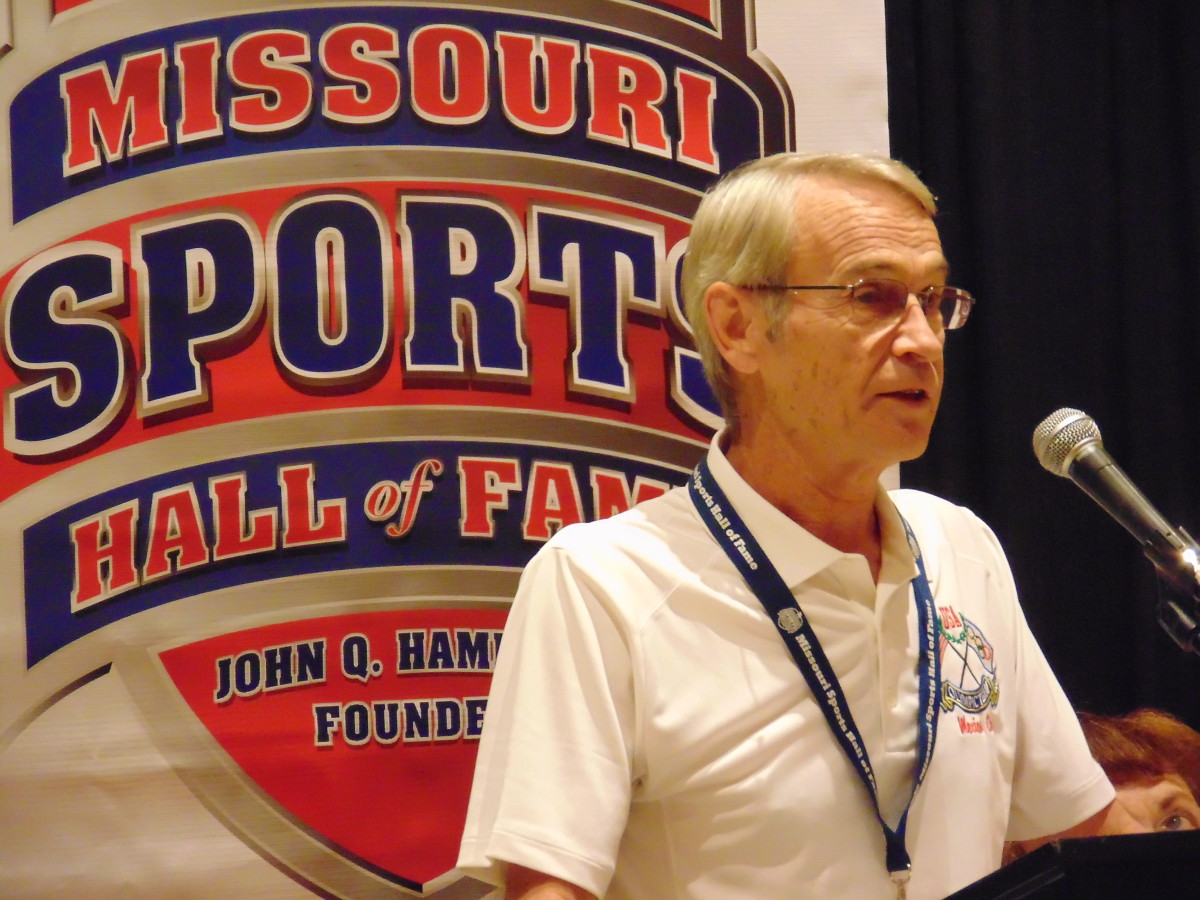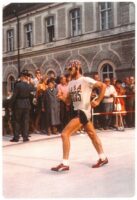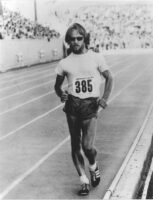Inductees
Larry Young

Born: February 10, 1943
One day, you’re a neighborhood jogger. The next, you’re an Olympian.
OK, so success didn’t quite happen that quickly for Missouri native Larry Young, but it’s not off by much.
Living in Los Angeles in 1965 after serving in the Navy, Young began competing in weeknight, all-comer track meets. Three years later, he was in the Mexico City Olympics, on the medal stand, having won a bronze in the 50 kilometer walk.
“It was pretty unreal,” Young says now. “Sports Illustrated always put out a list of people who were medal contenders. I wasn’t even on the screen. Nobody gave me a chance.”
Indeed, his rocket-like rise in the sport became the stuff of legend, leading to Young’s induction into the Missouri Sports Hall of Fame.
For almost two decades, Young dominated his sport. He won more than 30 national titles from 2 miles to 100 miles, finished 10th in the Olympic 20K Walk, and added two gold medals in the 50K walks in the Pan-American Games.
And, oh by the way, he walked a 100-mile race in 1971 and his time of 18 hours, 7 minutes, 12 seconds remains the U.S. record.
“I was a stickler for technique,” Young said. “My dad shot a lot of 8 millimeter film. We’d sit for hours analyzing the film frame by frame to re-engineer my technique.”
The sport was not on Young’s radar in the early-1960s.
Sure, he competed in track at Fort Osage High School and set the school record for the mile before graduating in 1961. However, he went off to the Navy and became mildly interested in distance running only after moving to L.A, where all-comer meets were common.
“I’ll never forget finishing dead last in the first walk I was in,” Young said. “But some of the guys in the race-walking circles said, ‘You’ve got potential.’”
He soon became much more serious and, within 18 months, won the national championship 50K Walk in Chicago at age 23.
Before long he was a member of the 1967 Pan-American Team, and guess who crossed the finish line first?
All in all, Young fell in love with the sport.
In fact, at the Mexico City Games, Young — who had trained at high altitude — flat out told the race favorite, Paul Nihill of Great Britain, that he would catch him.
“We were staying in the Olympic Village, and two days before the race we were trying to psyche each other out,” Young said. “Nihill bragged, ‘The winner is going to take it in 4 hours, 10 minutes, and it’s going to be between myself and East Germany’s Chistoph Hohne.
“I said, ‘If you walk that pace, I’ll see you between 30 and 40 kilometers.’”
Young delivered, passing Nihill at 40 kilometers as Nihill obviously suffered from Mexico City’s high altitude. Young soon became the first American in history to win a medal in the 50K walk, the longest foot race in the Games.
“Training at altitude above Lake Tahoe and at Alamosa, Colorado,” Young said, “allowed us to learn what we could do.”
Columbia College President Merle Hill called Young in 1969 and offered him the first full-ride race-walking scholarship in the United States.
With a sustained regiment of 100 miles a week, Young walked the best race of his life in 1972 Munich, beating the existing world record to earn his second Olympic bronze medal.
Unfortunately, an injury in 1976 and a U.S. boycott of the 1980 Moscow Olympics shut the door on making another Olympic team.
Still, Young’s positive influence stretched for years.
Young studied art under Columbia College’s terrific art faculty, went to Italy on a two-year sculpture grant, and over time became a renowned sculptor.
He attributes much of his success to the Columbia College arts faculty, especially his mentor, the late Sidney Larson, as well as his Columbia College girlfriend and wife of more than 40 years, Candy. They have two adult children, Zach and Sydney.
“I hung up my shoes in 1980,” Young said, and later added: “I felt confident that I could make another Olympic team, but after 1980, my energy was focused on creating monumental sculpture. I didn’t have time to put into training like I should, if I was going to be serious.”
Olympic connections continue to be important to Young. In 2000, he joined with fellow Olympians Al Oerter and Bobby Beamon as charter members of Art of the Olympians, an international group of Olympians whose art has been shown around the world.
Young remains the most successful race walker in American history and he has been honored as a member of the U.S. Track and Field Hall of Fame, Xerox’s U.S. Track and Field’s Century of Champions, Runner’s World’s All-Time U.S. Olympic Dream Team, and Columbia College’s Hall of Fame.
All in all, impressive for an athlete who came from almost nowhere.

